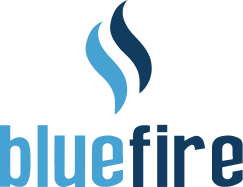3 SEO Services of a Successful Kalamazoo Business
What is it, exactly, that gets businesses found online?
If you’re reading this, then you’re probably already familiar with Search Engine Optimization (SEO), or the practice of tailoring websites to be easily found by a target audience. But SEO can seem complex if you’re not already an industry pro. Easier concepts like keywords and headings are one thing, but what do you do if you wanted to put a number on your site performance? Moreover, what elements constitute site performance?
Here at Blue Fire Media, we’ve dedicated our careers to answering questions like these and bringing SEO solutions to customers throughout Kalamazoo and southwest Michigan. That’s why we’re taking this month’s blog post to discuss the 3 essential SEO services that all business owners should know as we enter the new year.
1. On-Page SEO: The Stuff You See
On-page SEO is one of the SEO services that most businesses are already familiar with. Broadly speaking, on-page SEO means optimizing the content that you see on the pages of the site you’re visiting. That means using keywords and headings to indicate to search engines what type of content website offers.
That being said, on-page SEO is far from simple. Because on-page SEO is the main metric that both humans and Google’s algorithms use to determine site quality, strong on-page SEO must appeal to two unalike groups: humans and AI.
The silver lining is that Google’s algorithms are constantly improving their matching of online content and users’ search intent. Essentially, search engines are constantly rewarding websites that give people the content they truly want. Here at Blue Fire, we always aim to target actual, human audiences when we create our content. We believe that content made by humans and for humans will always come out on top.
2. Technical SEO: The Stuff You Don’t Think About
The big idea of technical SEO is that, hopefully, your audience is never thinking about it.
Technical SEO is the optimization of all the aspects of your site that make the audience experience enjoyable and accessible. Load times, for instance, are absolutely critical to your audience’s experience. Studies show that after only 5 seconds of loading, over ¼ of audiences click off a page. At the same time, the remaining ¾ of your audience aren’t going to be very happy.
Google and other search engines catch on to websites with these longer load times and prefer not to recommend them to audiences. By contrast, websites with short load times that simply “feel good” to use encourage users to spend more time on them, which Google rewards.
Other than load times, there are a variety of technical aspects to a site that users love (even if they never think about them). A handful of these aspects are:
- HTTPS certification (A.K.A. user information security)
- Compressed images
- Mobile friendliness
- No duplicate content
Basically, if you’re ever on a website and think to yourself, “Hm, something feels funny about this,” then you’ve probably just encountered a technical SEO issue.
3. Site Audits
Site auditing is the practice of testing a website for the strength of its search engine optimization. In a way, it’s almost like taking your website to the doctor for a routine checkup.
Here at Blue Fire, checking up on a website at consistent intervals allows us to make minor changes that keep the site’s health maximized. Where a doctor might tell you to eat an apple a day to stay healthy, site auditing is our way of building up a potentially huge SEO benefit by making minor changes, like through keyword strategies.
At the same time, these site audits clue us into potential big changes we might want to make in the future and prepare us for the easiest transition possible. Since search engines like Google are always refining their search strategies, site audits help keep our sites on the cutting edge. When we perform a site audit, we generally examine a few major aspects of a site’s design:
Performance. How “nice” the website feels and how easy it is to navigate around. Examples include: load times, internal links, keyword cannibalization, 404 errors and 301 redirects.
SEO Ranking. Where the website is ranking on a website and why. Examples include: keywords, conversion rate, and meta data.
Accessibility. How easy the website is to use for all audiences. Examples include: Color contrast, alt attributes, heading order.
These are only some essentials of a site audit, and our team of experts here at Blue Fire thoroughly examine all of these and more when we perform our site audits.
In Recap
Today, we’ve covered the basics of 3 essential SEO services: On-Page SEO, Technical SEO, and Site Auditing. Though there’s certainly much more to these complex systems, even this much knowledge can have the power to put you far ahead of your competitors.
If you want all of these SEO services and more performed by a team of professional web designers, then Blue Fire Media is here to help. With an extensive portfolio of websites and decades of experience, we’re Kalamazoo’s #1 website designers. Click here to contact us for more information.



